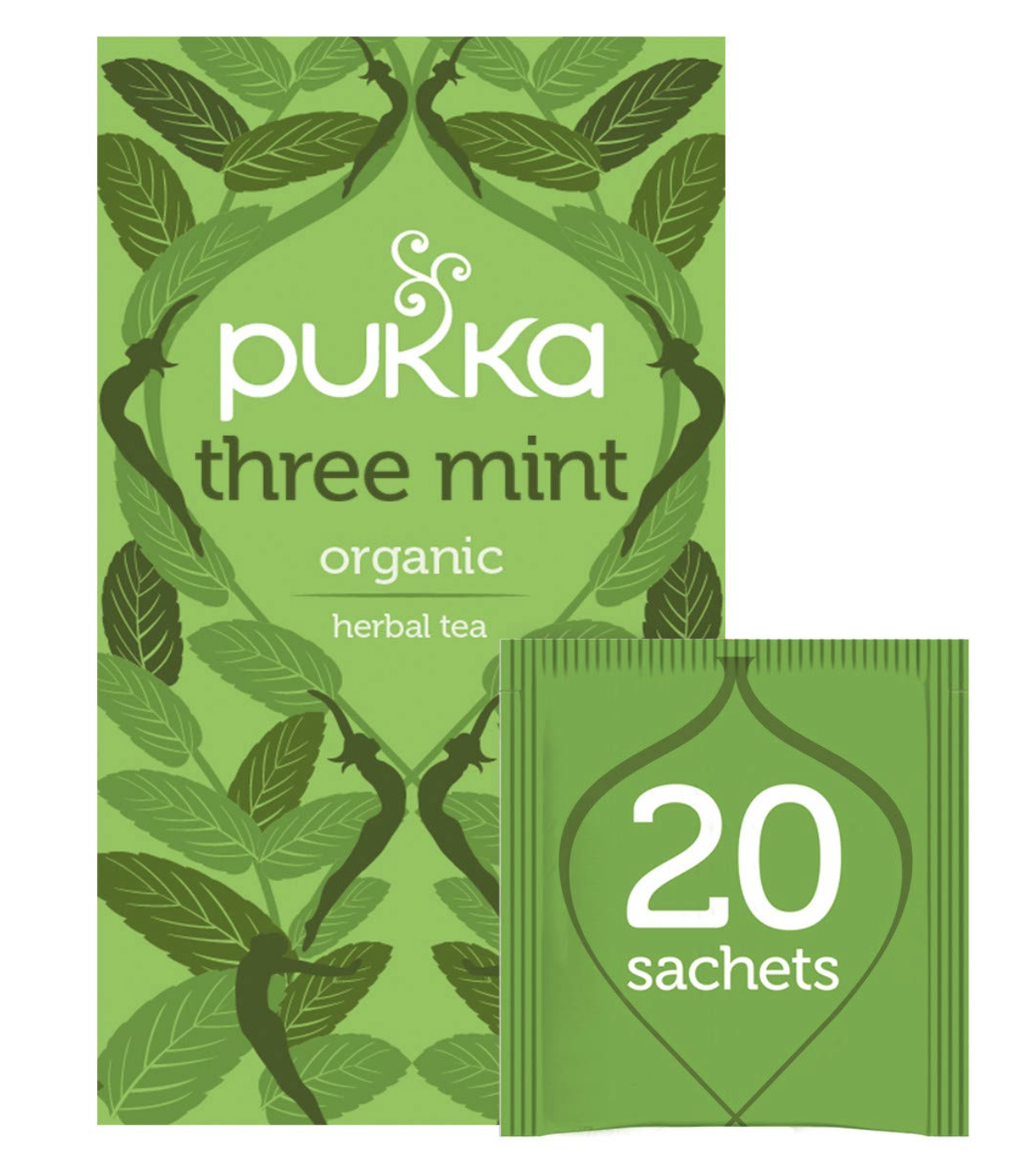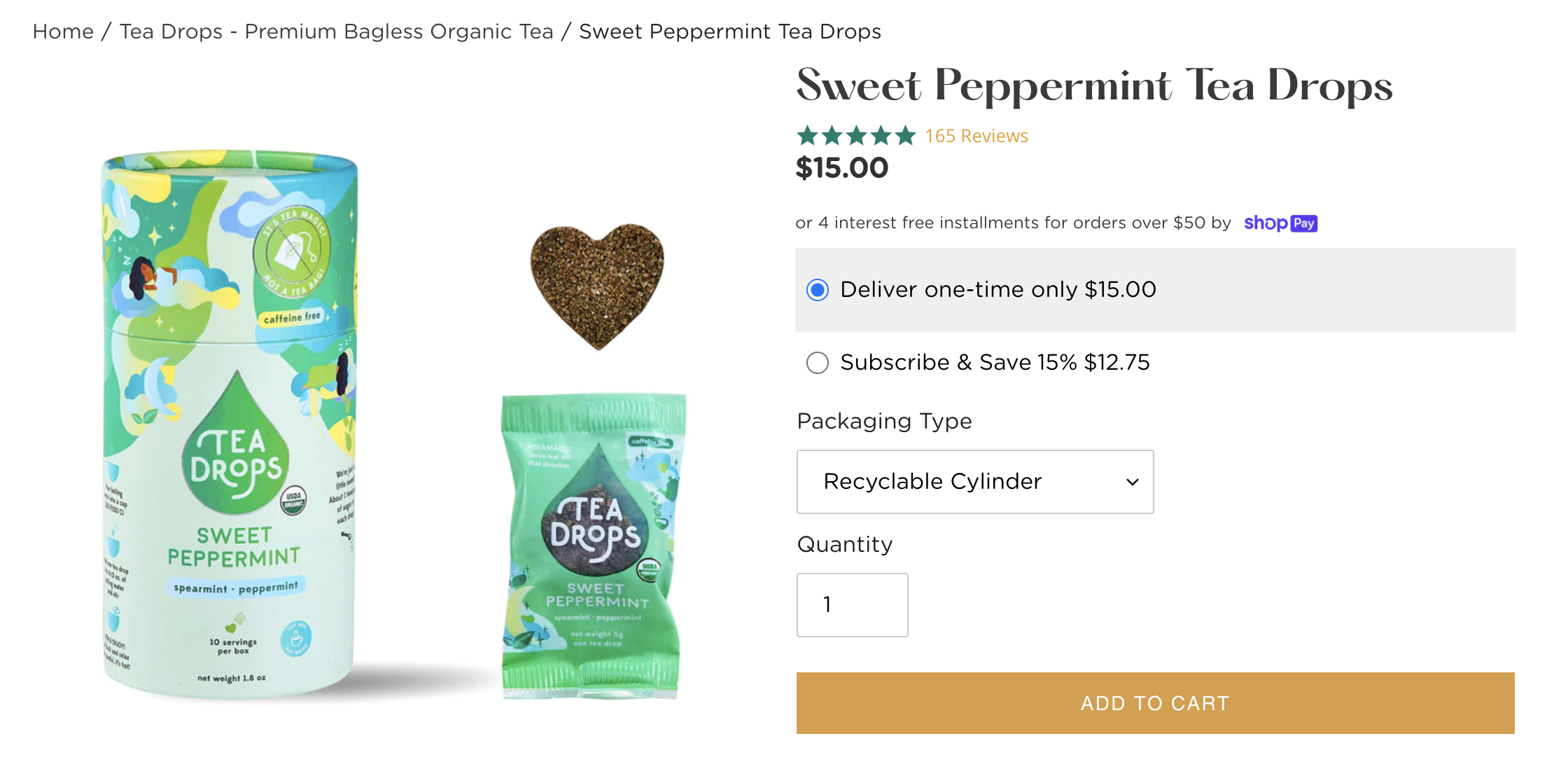3 Tea Brands that Prove how Packaging Impacts Sales
If you're an eCommerce business looking at direct and aspirational competitors on Instagram and wondering how their brand is so successful, then this is the blog post for you. This week I'm showing you 3 popular tea brands with wildly different packaging and price points to illustrate how packaging impacts sales.
So brew your fav cup of tea and let's dive in!
1. Let's look at the Packaging Design for Bigelow:
Bigelow tea is sold for as low as $2.50 and comes with 20 tea bags.
Overall, their brand appeals to the everyday American. Their tea evokes nostalgia, family-owned sentimentality, and American patriotism with their old-school design, note from the founder, and 100% "American-owned and manufactured" stamp. Not to mention, who can beat their low, low price of $2.50? This tea brand makes quality tea accessible to everyone.
Bigelow Mint Tea Packaging
2. Now, let's look at the packaging for Pukka Tea
Pukka (puh-kuh) Tea is an organic tea brand with a slightly more modern look. It's sold for around $5 at most stores for 20 tea bags (also called sachets). Their brand focuses less on who buys their tea and more on how their tea makes people feel. They focus on bringing relaxation, rest, and rejuvenation to their customers to improve their overall well-being with quality ingredients and the act of taking time for one's self. Here's a snippet from their website:
"Our purpose is to nurture healthier, happier lives through powerful organic plants. By nurturing mutually benevolent relationships with farmers, sourcing partners, and everyone who works for us, and with us, we strive to build a sustainable future for all. We hope you feel inspired to discover more about yourself and the beautiful planet on which we all live." - Founders of Pukka
Pukka is a brand that cares about people, the environment, and the future. They use their packaging to reflect that:
3. Lastly, we're going to look at the packaging for Tea Drops
Tea Drops is an eCommerce brand that sells tea canisters for $15 including 10 servings. Or, you can purchase their tea in a burlap bag in which case it's $15 for 25 servings. Still a lot pricier than your average tea brand. So, how is this brand so successful? Let's start by looking at their packaging.
Tea Drops packaging is hands-down some of the best I've ever seen. Not to mention, the paper they use is high quality and soft to the touch. In essence, it feels like a luxury item, but this brand is a power-house of do-goodery!
If you read through their packaging (which is easy to do with the beautiful design guiding your eye) you'll see all sorts of certifications. They are gluten-free, organic, fair trade, AND each purchase donates a year's supply of clean water to someone in need. Pretty impressive right?
Their mission is to "create magical moments that connect you to what's important".
It's safe to say that they do a good job at this with the help of their packaging design which also explains how to use their product, what makes it so unique (and fun), and how you, as the consumer, have helped make the world a better place.
Tea Drops Mint Tea Packaging Design
All this to say - Packaging design directly impacts sales. Here's how:
In the increasingly digital world we live (and shop) in, making sure your products look great is non-negotiable. BUT, another powerful aspect of effective packaging design, is that it also creatively communicates what sets your brand apart from your competitors (A.k.a. your brand's special sauce!)
1. Packaging impacts sales by being memorable meaning it helps you stand out and capture the attention of your potential customers
Bigelow's packaging is perfectly fine for the price point that it's at. Their customers most-likely don't care about the look as much as they do about the low price.
However, when you look at Pukka and Tea Drops, their packaging needs to be memorable and stand out from the crowd. They have to work harder and show up in a more impactful way to capture the attention of potential customers. The packaging allows them to stand out and inspire more sales at a higher price point because the packaging evokes the sense that it is a higher quality product.
2. Packaging impacts sales by creating an emotional buying experience that inspires people to buy your product. More and more consumers each year want to feel a personal, emotional connection to the brands they buy from.
Tea Drops and Pukka tea do a great job with this. Pukka appeals to the consumer who wants to relax and rejuvenate. They have an above-average price range, but don't need something too fancy.
Tea Drops, on the other hand, offers a fun, memorable experience while using the tea. Their beautiful packaging and brand values inspire people to pay the elevated price, and their unique bag-less tea keeps the fun going and the customer uses the product.
3. Packaging design impacts sales by being shareable!
Just ask yourself, would you be more likely to post a picture of a product you love that also has beautiful, aesthetic packaging? I think yes!
So when you look at this example you can see that the price difference for each box is drastically different (especially with the last one, Tea Drop). But you know what that last one’s packaging does well?
👉🏻 it communicates the brand’s values (#ethicallysourced#vegantea#womenownedbusiness)
👉🏻 it has beautifully illustrated and #recyclablepackaging
👉🏻 it explains why their product is unique and how your money is contributing towards a greater cause.
All of these things work together to get many loyal customers paying $15 for 10 tea bags when they could go to the grocery and pay $2.50 for 20.
🤯🤯🤯
So, what do you do with this information???
First, it's important to understand why people choose to buy from certain brands vs. others.
We all know that some brands just "work" seemingly effortlessly and others well... don't.
And most of the time, I feel like if we really took a moment to ask ourselves why we don't think on brand is getting more attention than others, we would know the answer.
Just think about this - every single week that you shop in-store or online, you're making conscious and subconscious decisions on which product to buy versus others. Take the grocery store for example, why do you buy one brand vs the other? Is it taste, quality, or price? Does one look more enticing than the other?
Here are some examples of how you might make purchasing decisions:
Let's take a look at my grocery trip:
I would 10/10 times buy Oreos rather than the generic "sandwich cookies" because I believe that Oreos truly taste better! - this is brand loyalty because I trust the quality.
But, when it comes to coffee, while I'm still not buying the generic grocery store brand, I'm not a Starbucks loyalist. I'm open to trying other brands that look or sound good.
When I do choose the generic grocery store brand, it's usually for things like peanut butter, bread, canned goods etc. A.k.a. things that I shop for based on price
Using those examples, think of how you might be making buying decisions at the grocery as well as at other stores!
Q: How do you choose which makeup to buy? Or which clothing brands to shop from?
Q: What makes you excited to buy something?
Q: Do you mostly shop for price, quality, how it makes you feel, or all of the above?
These are all important things to consider when building you're own product-based brand. Put yourselves in the minds of your consumers and consider how they might feel. Does your product offer good quality for a low price? Does it speak to a certain type of aspirational lifestyle that people want?
How will you capture their attention? Then, how will you convince them to try your product instead of a leading competitor brand??
If you're looking to sell a high-quality product at a higher price point, the secret to both is packaging design. Determine what makes your product special and how you want your customers to feel when they see and use your product.











